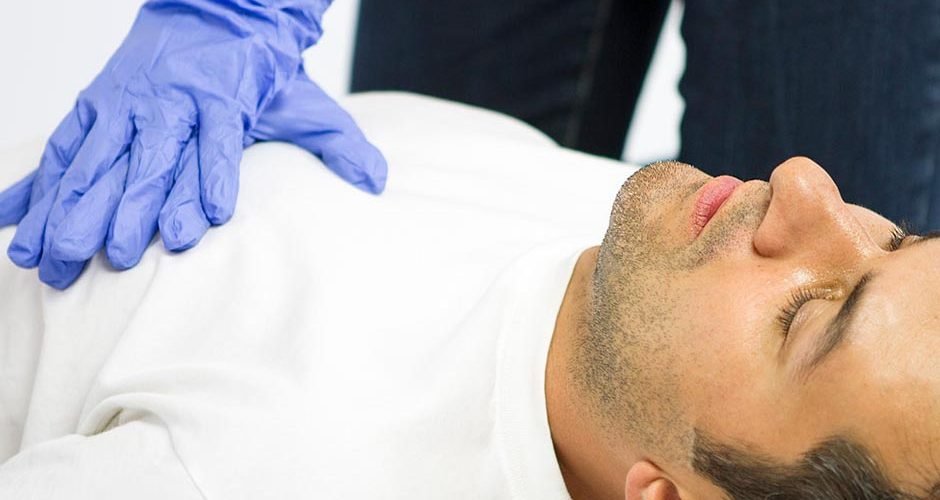Cardiopulmonary resuscitation, commonly known as CPR, is a life-saving technique that can be performed by anyone. It combines chest compressions and rescue breaths that can help to restore blood flow and oxygen to the brain and other vital organs when someone’s heart has stopped beating. CPR is an important skill that can make the difference between life and death in an emergency situation. In this article, we will explore the importance of CPR, how to perform it, and the importance of formal training and certification.
Table of Contents
The Importance of CPR
CPR is a crucial skill that can help to save lives and mitigate long-term damage and complications that arise from medical emergencies. According to the American Heart Association, around 350 thousand cardiac arrests occur outside of a hospital each year in the United States. This means that someone experiences a cardiac arrest every 90 seconds. Without immediate treatment, the chances of survival decrease by 10% every passing minute. However, performing CPR can double and even triple the chance of survival for someone in cardiac arrest.
Performing CPR on someone in distress can also mitigate lasting harm. Oxygen deprivation, especially to major organs like the brain, often leads to lifelong medical complications. By performing CPR, you ensure that oxygenated blood continues to circulate through vital organs, mitigating the damage of the person’s medical emergency.
In addition to cardiac arrests, CPR can also be used to help someone who is choking, drowning, suffocating, or overdosing. Knowing how to perform CPR can help you act quickly in an emergency situation and potentially save a life.
Relevant Statistics
- According to the AHA, only 46% of people who experience an out-of-hospital cardiac arrest receive bystander CPR before emergency medical services arrive.
- The survival rate for someone who receives CPR immediately after cardiac arrest is about 40%
- In a study published in the New England Journal of Medicine, researchers found that hands-only CPR (chest compressions without rescue breaths) was just as effective as traditional CPR for adults who experienced cardiac arrest outside of a hospital.
When and How to Perform CPR
Always ensure that the person is unresponsive and not breathing before beginning CPR. Once you have verified the person’s condition, instruct someone to call emergency services while you start administering aid.
Position the person on their back on a firm surface. Tilt their head back and chin up, then open their mouth. This opens their air passages. Interlace your fingers, and place the heels of your palms in the center of the person’s chest. Press down hard, enough to compress their chest by 2 inches. Let up and repeat. You want to aim for 100 compressions each minute. Next is rescue breathing. Every 30 compressions, stop to give 2 rescue breaths. You do this by pinching the person’s nose closed, sealing your mouth over theirs, and breathing air into their mouth. This helps keep the blood oxygenated while your chest compressions keep it flowing. Continue CPR until medical personnel are ready to take over.
Why You Should Be Formally Trained and Licensed
While it’s true even a regular person can attempt CPR, it should fall to someone formally trained. While a lot of apps and articles can help walk you through amateur CPR, there is a risk that you could harm the person in distress. The potential to save their life is worth the risk, but isn’t it better to eliminate the risk altogether?
Thanks to online learning, CPR training courses and certification are more accessible than ever. Classes are available online, in-person, or through a combination of both. Ensure that your course provider is accredited and acknowledged by organizations like the Red Cross or the American Heart Association.
What to Expect in CPR Training
Your expectations will be different for in-person or online classes, but only just. Both will cover the basics of CPR, how to recognize medical distress, how to use a defibrillator, and how to work with a team during an emergency.
Online courses allow you to go through the content at your own pace, whether you want to do everything at once or fit in bite-size sessions as your schedule allows. In-person courses will instead require you to attend a set amount of lessons. Both courses will end with an exam, which you must pass to be officially certified in CPR.
Certification and Renewal
Once you pass your exam, you are certified. Certification, however, is not a one-time thing. It will expire after two years. However, you generally can take a refresher course to renew your certification rather than taking an entire course again.
Additional Training
If you are considering CPR training and certification, take a look at all of the available courses. Many courses offer a combination of CPR and first aid, which would equip you with even more skills to help someone in medical distress. First aid can cover anything from treating black eyes to bandaging wounds.
If you are a healthcare professional or a rescuer, CPR training sites like protrainings.com also offer accredited continuing education courses.
Wrapping Up
In addition to learning CPR, you should also consider having an emergency plan in place. This may include making sure your kids know how to call the emergency line, having a first aid kit on hand, and knowing the location of the nearest defibrillator. By discussing the importance of emergency plans, you can ensure your family knows what to do in a crisis and understands the importance of preparation.
CPR certification and emergency preparedness can benefit your community and place of work, as well. If you decide to become certified, let your boss know. This helps them since they know they can call on you in the event an employee has a medical emergency; you may even inspire them to host a training event for other workers interested in learning.
CPR training and certification can provide you with the knowledge and skills needed to respond quickly and effectively in an emergency situation. By completing a CPR course, you can help to ensure that you are prepared to act if someone experiences cardiac arrest or another life-threatening emergency.





